
Who Were
The Cambs
The Cambs
at War
1/1st Btn 1914-1919
1914 - 1/1st Overview
1915 - 1/1st Overview
1915 - St Eloi
1915 - Fosse Wood
1916 - 1/1st Overview
1916 - The Schwaben
1916 - St Pierre Divion
1917 - 1/1st Overview
1917 - St Julien
Insignia, Medals & Books
Remembering The Cambs
Biographies
About Us &
This Site
The Offensive Spirit
Information about enemy dispositions was a necessity, so patrols would position themselves close to the enemy barbed wire in an attempt to gain intelligence. Occasionally, there was a need to raid the German trenches to capture prisoners. Such actions were seen as upholding the offensive spirit.
During the 2nd Battle of Ypres in early 1915, the 1/1st Cambridgeshires saw service in and around a large wood that the British had named Shrewsbury Forest. The battalion sent out patrols to find out about the units opposite them. Several such episodes in May 1915 by 2nd Lts Kenneth Gill and Eric Hopkinson resulted in Field Marshall Sir John French naming these two officers in one of his Despatches to illustrate the spirit of the army.
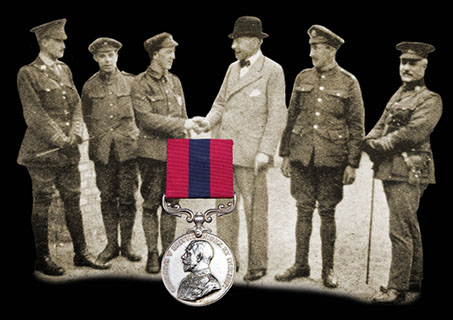
Cpl Jimmy Day being presented with his DCM by Mr Adeane, the Lord Lieutenant of Cambridgeshire, in early 1916.
His Despatch said: A patrol of two officers and a non-commissoned officer of the 1st Cambridgeshires went out one night to reconnoitre a German trench 350 yards away. Creeping along the parapet of the trench, they heard sounds indicating the presence of six or seven of the enemy. Further on they heard deep snores, apparently proceeding from a dugout immediately beneath them. Although they knew that the garrison of the trench outnumbered them, they decided to procure an identification. Unfortunately, in pulling out a clasp knife, with which to cut off the sleeper’s identity disc, one of the officer’s revolvers went off. A conversation in agitated whispers broke out in the German trench, but the patrol crept safely away, the garrison being too startled to fire.
In the regimental history (The Cambridgeshires 1914-1919 by Riddell and Clayton), these exploits are also detailed. Clayton (Lt-Col M C Clayton), who in the period March to May 1915 was a Captain in C Company, wrote about a patrol on May 14, 1915: Information was urgently required as to the enemy’s intention, and Hopkinson, who spoke fluent German, accompanied by Gill volunteered to try and obtain it. They crept up to the German parapet and lay there for 90 minutes, gleaning scraps of information. Emboldened by this success, the next time they actually clambered into the German line against a sleeping sentry. They were trying to cut off the German’s identity disc when the alarm was given, but they got away safely.
Later in the book, when detailing about the regiment’s time at Houplines, near Armentieres, Clayton recorded another patrol during the night of June 1-2, 1915: The battalion lost one of its most brilliant and fearless officers. Hopkinson and Gill with two men went out to reconnoitre the German line. They got within 20 yards of the enemy’s line and then were fired upon. Hopkinson was hit and left for dead, Gill though badly wounded got away with the two men.
Hopkinson and Gill, both of B Company, were awarded the Military Cross.
Eric Humphrey Hopkinson was a doctor’s son from Whittington, Lancs, who was an undergraduate at Trinity College, Cambridge, from 1913. He enlisted in the ranks of Cambridgeshire Regiment at the outbreak of war, but was soon commissioned.
Hopkinson’s MC citation read: For gallant and most useful work on patrol duty near Ypres on several occasions, notably on 12th May 1915, when he led his patrol to discover hostile patrols in concealed ground in front of his trenches, and on 14th May, when he led his patrol right up to the German trenches and remained on the parapet one and a half hours. This patrol brought back very valuable information.
He is recorded as having died of wounds, age 21, and has no known grave, being listed on the Ploegsteert Memorial to the Missing.
Kenneth Carlyle Gill was a vicar’s son from West Wittering, Sussex, who was an undergraduate at St John’s College, Cambridge, from 1912. He also enlisted in Cambridgeshires as a private, being commissioned in October 1914.
Gill’s MC citation read: For gallant and most useful work on patrol duty on several occasions. Near Ypres, he went with another officer along the line of the enemy’s trenches to investigate some dead ground concealed from our trenches. On 14th May 1915 he went out and remained on the German parapet one and a half hours gathering valuable information. On the night of 1st-2nd June, near Houplines, when reconnoitring hostile wire with another officer, the patrol was discovered and heavily fired upon. Lt Gill though severely wounded, made repeated efforts to bring in his brother officer, who was wounded and unable to move within 20 yards of the German trenches.
He was wounded on June 1, losing two fingers on his left hand, getting a bullet in his right hand and a body wound. After recovering from his wounds he eventually trained to be a pilot. He returned to the Western Front on September 14, 1918, to serve with 22nd Squadron RAF and died of wounds, aged 28, on October 23, after a flying accident. Gill, the squadron’s last fatal casualty of the war, is buried at Fillievres British Cemetery, France.
Accompanying the two officers on a patrol in Shrewsbury Forest was L/Cpl George Patrick Doggett, of Cambridge. Doggett, who was in B company, was promoted to Lance Corporal in March 1915, mentioned but not named in French's Despatch, and promoted to Corporal after the patrol.
Doggett gained a commission and served as a 2nd Lt with 7th West Riding Regt, attached to a Trench Mortar Battery, from 1917. Wounded on June 7, 1917 at Messines, Doggett died of wounds on July 4, 1917, in London, age 22. He is buried at Cambridge Borough Cemetery.
Lt Gill detailed an account of the Ypres incident to a relative, stating that they agreed he would knock out a sleeping German with the butt of his revolver.
He wrote: Just as we had all taken our places for slipping into the trench, old Hopper, in trying to get at his knife to cut off the identity disc, accidentally let off his revolver quite close to my nose.
Gill continued: The sleeping man jumped up, two or three came hurrying down from the left, and they all collected just below us. It would have given the game away if we had made a bolt for it. The trio listened as the Germans talked, and decided to withdraw to the British trenches.
At Armentieres, the two men accompanying the two officers were L/Cpl Ernest ‘Jimmy’ Day and Pte Frank Marking, both of the Machine Gun Section. They tried to rescue Hopkinson, but failed, with both recommended for honours. Day, from Cambridge, was awarded the Distinguished Conduct Medal for his efforts. The citation read: For conspicuous gallantry when with an officer’s patrol he made two brave attempts, under heavy fire, to bring in a badly wounded officer, who was lying close to the enemy parapet.
Day later transferred to the Machine Gun Corps and was discharged from the army in 1919. Writing a memoir in 1990 about his service, he described the event: We got up to their barbed wire, spread out in a line, about 20 yards apart, when a flare went up, and, of course, we got down. Whether they saw us, I don’t know, but one of the officers may have been a bit late getting down.
He added: There was a burst of fire and I heard him shout out. Then he got up and he dropped down again. Then this other officer gets up and runs like Hell; and all Hell was let loose then.
The Germans investigated but returned to their trench. Day recalled: We started to go forward to see where this officer was. But before we got to him, they were out again with a stretcher and they took him back to their trench.
Pte Marking, who was from Saffron Walden, wrote to his mother on June 2, 1915, stating that it took the party 90 minutes to crawl to the German wire. He wrote: They suddenly fired a shot which hit one of the officers, who called out, and they at once peppered us at short range.
Day and Marking got back to their trenches, where they found Gill being bandaged, so they volunteered to bring in Hopkinson.
We ran and got over their first lot of barbed wire, when they spotted us, and sent up a flare and a shot or two, said Marking. The pair ran to within 30 yards of the German trench, but another flare was sent up and they couldn’t get any further and reluctantly returned. Within weeks Marking was dead, killed when a shell hit his dugout on June 26, 1915.
Attempts were made to communicate with the Germans in the following days to find out about Hopkinson. Pte William Emerson, of Wisbech, who was in the battalion’s signal section, wrote to his mother about how he was detailed, with L/Cpl Ted Piggins, also of Wisbech, to signal to the Germans in an attempt to get some news by means of flags. The Germans did not take any notice, and before very long a bullet was sent through the flag, he wrote.
Emerson continued: The day before last I went to another part of the line with Major Archer, and started to signal. This time we were successful, so we rigged up a board asking them to communicate with us about a wounded English officer. This time the Germans co-operated and claimed that Hopkinson was alive, but he was never heard of again.
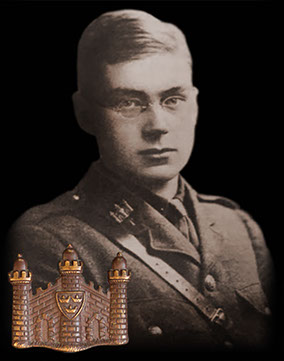
Hopkinson shortly after being commissioned.
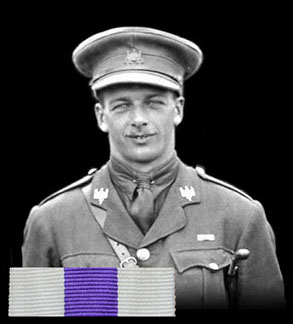
Gill in 1917 while with the 4/1st Cambs.
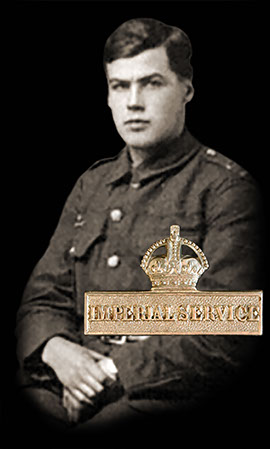
George Doggett died 4th July 1917.
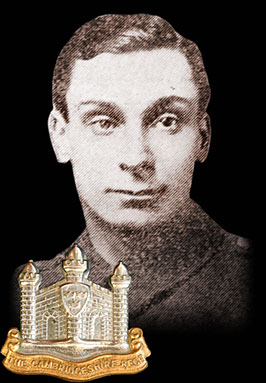
Frank Marking killed 26th June 1915.
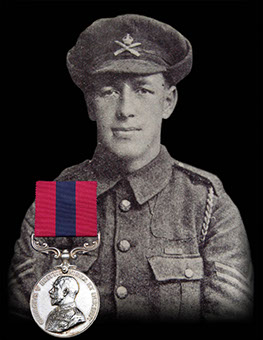
Jimmy Day DCM while in the MGC.

This site went live on the 14th February 2015 to mark 100 years since the 1/1st Cambs went off to war.
WE WILL REMEMBER THEM
Email us: cambsregt@gmail.com
Copyright 2015, 2016, 2017, 2018, 2019 by Felix Jackson. The information and images on this site should not be reproduced without prior permission.